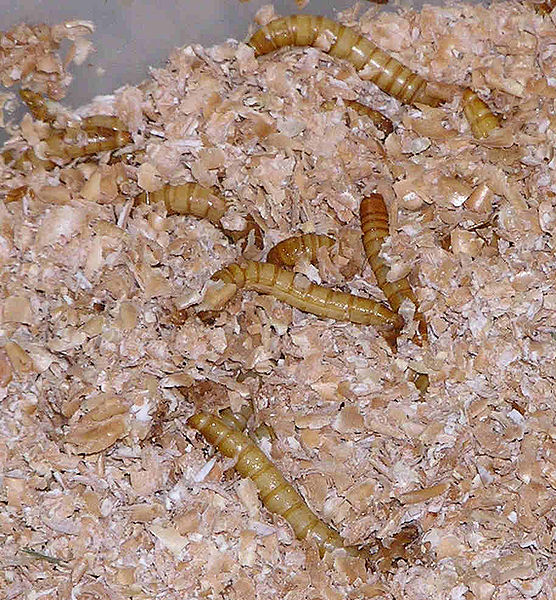Please see Green Anole Natural History for information concerning the natural history of the green anole and its relatives.
General
 Green anoles became a US pet trade staple in the 1960’s and early 70’s. Labeled “chameleons” due to their color-changing abilities, millions were collected in Florida and Louisiana and sold at circuses, fairs, pet stores and through the mail. In time, they became the “first lizard” for a generation of budding herpetologists. A host of grossly inappropriate supplies (including lapel chains!) and husbandry techniques assured most of the unfortunate creatures a short and unhappy captive existence.
Green anoles became a US pet trade staple in the 1960’s and early 70’s. Labeled “chameleons” due to their color-changing abilities, millions were collected in Florida and Louisiana and sold at circuses, fairs, pet stores and through the mail. In time, they became the “first lizard” for a generation of budding herpetologists. A host of grossly inappropriate supplies (including lapel chains!) and husbandry techniques assured most of the unfortunate creatures a short and unhappy captive existence.
My Less-Than-Promising Start
I remember well purchasing a green anole (packaged, oddly enough, in a small pie box) at the famous Ringling Brothers, Barnum and Bailey Circus at Madison Square Garden in the early 60’s. I knew enough to bypass the recommended diet of “sugar water and dried ant eggs” but was ignorant of the beast’s UVB requirements. I did, however, gather that it craved sunlight, and during one basking trip the lizard escaped up a caterpillar- laden apple tree where, I hope, it at least enjoyed the NYC spring and summer.
A Bit Delicate, but Well-Worth the Effort
Green anoles do reasonably well in captivity but are not the hardy, “starter lizards” they are often proclaimed to be. They are prone to stress-related ailments, require careful attention to the diet, and are quite sensitive to light, temperature and humidity levels.
That being said, I feel that their potential is largely ignored – a properly maintained group will readily display numerous social interactions, and makes as active and interesting a lizard exhibit as can be imagined. What’s more, establishing a colony of green anoles in such a situation is well within the financial and space constraints of many pet keepers, which cannot be said of most lizard species.
My co-workers at the Bronx Zoo frowned when I began adding green anoles to several large exhibits, but they (the lizards, not co-workers!) quickly became crowd pleasers. Even in an exhibit housing 2 huge water moccasins, it was the leaping, displaying anoles that drew most of the public’s attention.
Enclosure and Physical Environment
Green anoles are highly arboreal and will prefer the upper reaches of their enclosure. Branches of various thicknesses and orientations should be provided, along with plentiful sight barriers in the form of suspended live or artificial plants.
Despite their small size, green anoles require a good deal of room, as they are very active and are easily stressed by tight quarters or if confined too closely to one another. Ideally, a trio should be provided with a well-planted, 20 gallon aquarium.
Males are intolerant of each other. If several females are kept, horizontal and diagonally oriented basking sites (these are preferred over vertical branches) should be plentiful, as dominant animals will exclude others from these important areas.
Anoles do best in complex exhibits, especially those with live plants. They are quite easy on live plants, and really do look at their best when among them. Snake plants, pothos, Philodendron, peace lilies and many others will be well-used by these little gymnasts, and the areas between large leaves make naturalistic nocturnal retreats.
Arboreal shelters, in the form of cork bark and hanging plants, should be provided. These and similar sight barriers are important, as females will establish a dominance hierarchy, and subordinate animals may be inhibited from feeding or basking, even absent outright aggression.
The substrate should hold a bit of moisture but not be soggy. I recently used Exo-Terra Jungle Earth with a covering of Compressed Frog Moss and dead leaves in a public exhibit, and am pleased with the results. You can also use Keeper’s Choice Red Cypress, Exo-terra Forest Bark or Coconut Husk, with any type of moss mixed in.
Click here: The Green Anole (Anolis carolinensis carolinensis) in the Wild and Captivity – Care in Captivity Part 2, to read the rest of this article.
 That Reptile Blog – Reptile, Amphibian and Exotic Pet Care and Information
That Reptile Blog – Reptile, Amphibian and Exotic Pet Care and Information


 The success that hobbyists have had in establishing breeding populations of so many species of poison frogs is truly astonishing, and has served a greater purpose in removing the financial incentive to collect them from the wild.
The success that hobbyists have had in establishing breeding populations of so many species of poison frogs is truly astonishing, and has served a greater purpose in removing the financial incentive to collect them from the wild. A steady diet of mealworms (I refer here to the small mealworm, Tenebrio molitor, not the giant mealworm, Zophobus mario) is not recommended for any reptile or amphibian. These beetle larvae lack essential nutrients, the calcium: phosphorus ratio is not ideal and the exoskeleton is high in chitin. Mealworms also have quite strong jaws, and may injure debilitated or small reptiles and amphibians.
A steady diet of mealworms (I refer here to the small mealworm, Tenebrio molitor, not the giant mealworm, Zophobus mario) is not recommended for any reptile or amphibian. These beetle larvae lack essential nutrients, the calcium: phosphorus ratio is not ideal and the exoskeleton is high in chitin. Mealworms also have quite strong jaws, and may injure debilitated or small reptiles and amphibians. Ever wonder how a male frog might draw the attention of a female when he is calling amid hundreds of others? Research published in the August, 2008 “Journal of Comparative Psychology” has revealed that gray treefrogs vary their calls in response to social situations. When alone or in small groups, males utilize the species’ usual call. However, when trying to attract a mate amid large groups, males will vary the rhythm of their calls, in order to stand out from the crowd.
Ever wonder how a male frog might draw the attention of a female when he is calling amid hundreds of others? Research published in the August, 2008 “Journal of Comparative Psychology” has revealed that gray treefrogs vary their calls in response to social situations. When alone or in small groups, males utilize the species’ usual call. However, when trying to attract a mate amid large groups, males will vary the rhythm of their calls, in order to stand out from the crowd.